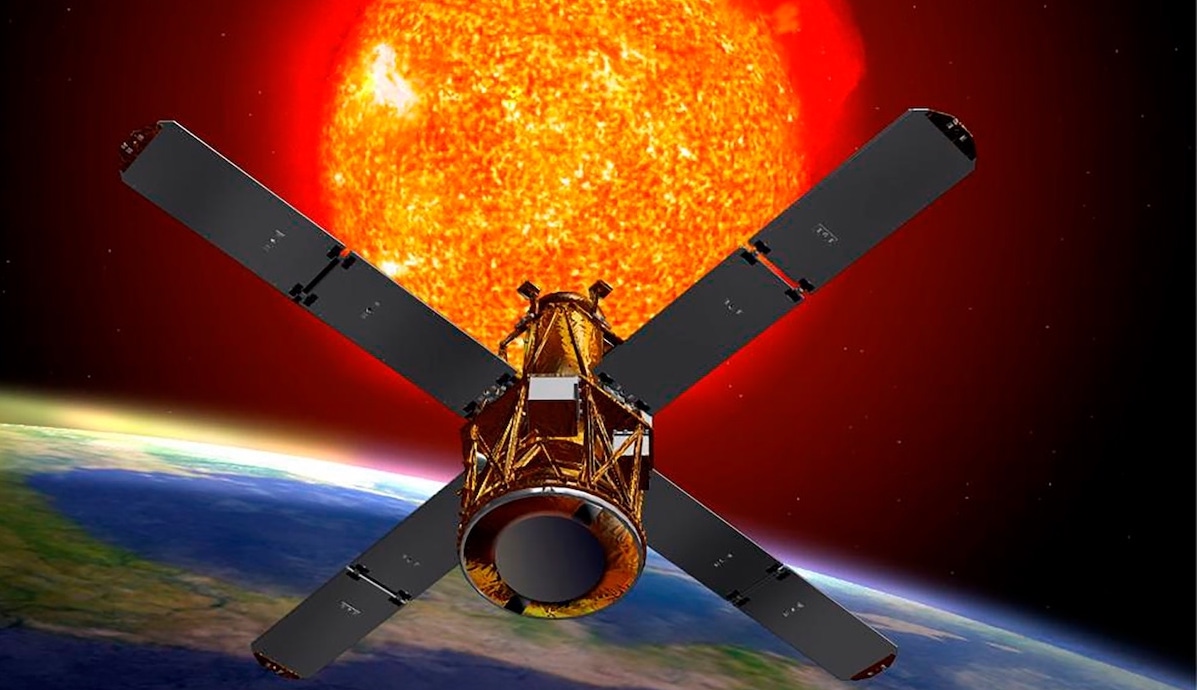Out-of-control defunct NASA satellite will smash into Earth today
The RHESSI satellite, which monitored the sun for nearly two decades, is set to crash to Earth at 9:30 p.m. EDT today.

A defunct, 660-pound (300 kilograms) NASA satellite is set to tumble uncontrollably back to Earth after spending two decades studying the sun from our orbit.
NASA's Reuven Ramaty High Energy Solar Spectroscopic Imager (RHESSI) satellite will hurtle through the Earth's atmosphere at 9:30 p.m. EDT on Wednesday, April 19 (1:30 a.m. UTC on Thursday, April 20), plus or minus 16 hours, NASA and the U.S. Department of Defense said.
The bulk of the dead satellite — which examined solar eruptions from 2002 until it was decommissioned in 2018 — is expected to burn up while passing through our atmosphere. NASA has said it is not disclosing where the surviving debris will land.
Related: Should we really be worried about China's uncontrolled rocket booster reentries?
"The risk of harm coming to anyone on Earth is low — approximately 1 in 2,467," NASA officials wrote in a blog post on Monday (April 17).
RHESSI was launched into a low-Earth orbit by the Pegasus XL rocket in 2002. The satellite used a spectrometer that detected X-rays and gamma rays — high-energy waves from the sun that are largely blocked by Earth's atmosphere — to capture data on eruptions from the sun in the form of solar flares and coronal mass ejections (CMEs).
By observing more than 100,000 X-ray flashes, RHESSI documented solar flares ranging from miniscule nanoflares to gigantic superflares and even made improved measurements of the sun's shape.
Sign up for the Live Science daily newsletter now
Get the world’s most fascinating discoveries delivered straight to your inbox.
The satellite is just one of many potentially hazardous pieces of space junk that have made headlines after tumbling uncontrollably out of orbit. Four of China's Long March 5B boosters — the workhorses of the country's growing space program — fell to Earth between 2020 and 2022, raining debris down on the Ivory Coast, Borneo and the Indian Ocean. In 2021 and 2022, debris from falling SpaceX rockets smashed into a farm in Washington state and landed on a sheep farm in Australia.
Space agencies around the world try to keep tabs on the more than 30,000 largest pieces of this junk, but many more pieces of debris are simply too small to monitor.
Space junk isn't just a problem when it falls on us, either. Researchers have found that the more than 9,300 tons (8,440 metric tons) of space objects orbiting Earth — including inoperative satellites and chunks of spent rocket stages — increase the overall brightness of the night sky by more than 10% over large parts of the planet, creating ambient light pollution that makes distant space phenomena harder to detect. These objects also pose a threat to the International Space Station and other spacecraft carrying humans.
Scientists have proposed multiple ways of tidying Earth's skies, such as gathering junk up in nets; collecting it with clawed robots; or firing a half–mile-long (0.8 km) tether from another spacecraft to grab it. On April 11, the Federal Communications Commission (FCC) announced it will set up a space bureau responsible for managing orbital trash, as well as modernizing regulations on the space industry.

Ben Turner is a U.K. based staff writer at Live Science. He covers physics and astronomy, among other topics like tech and climate change. He graduated from University College London with a degree in particle physics before training as a journalist. When he's not writing, Ben enjoys reading literature, playing the guitar and embarrassing himself with chess.









